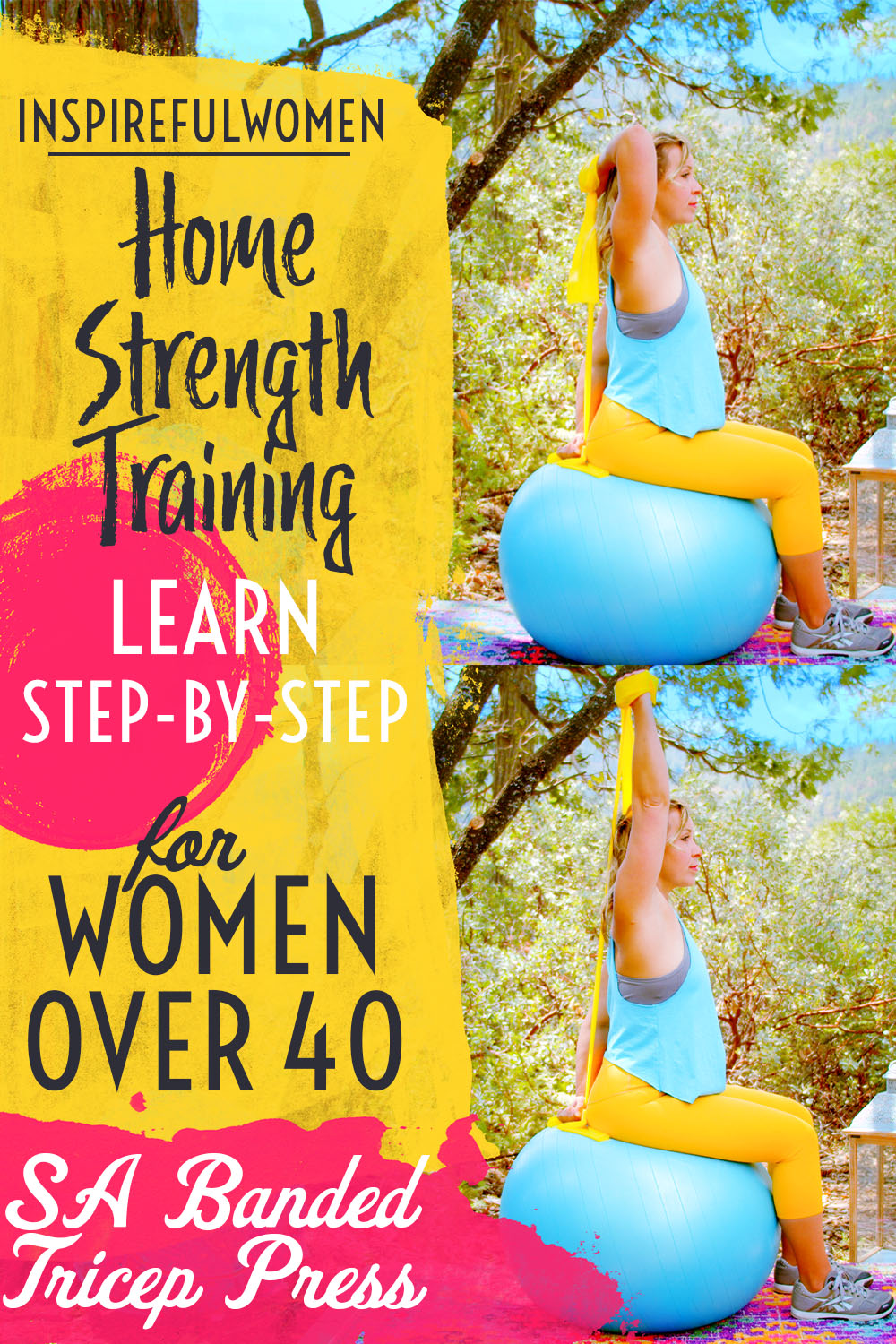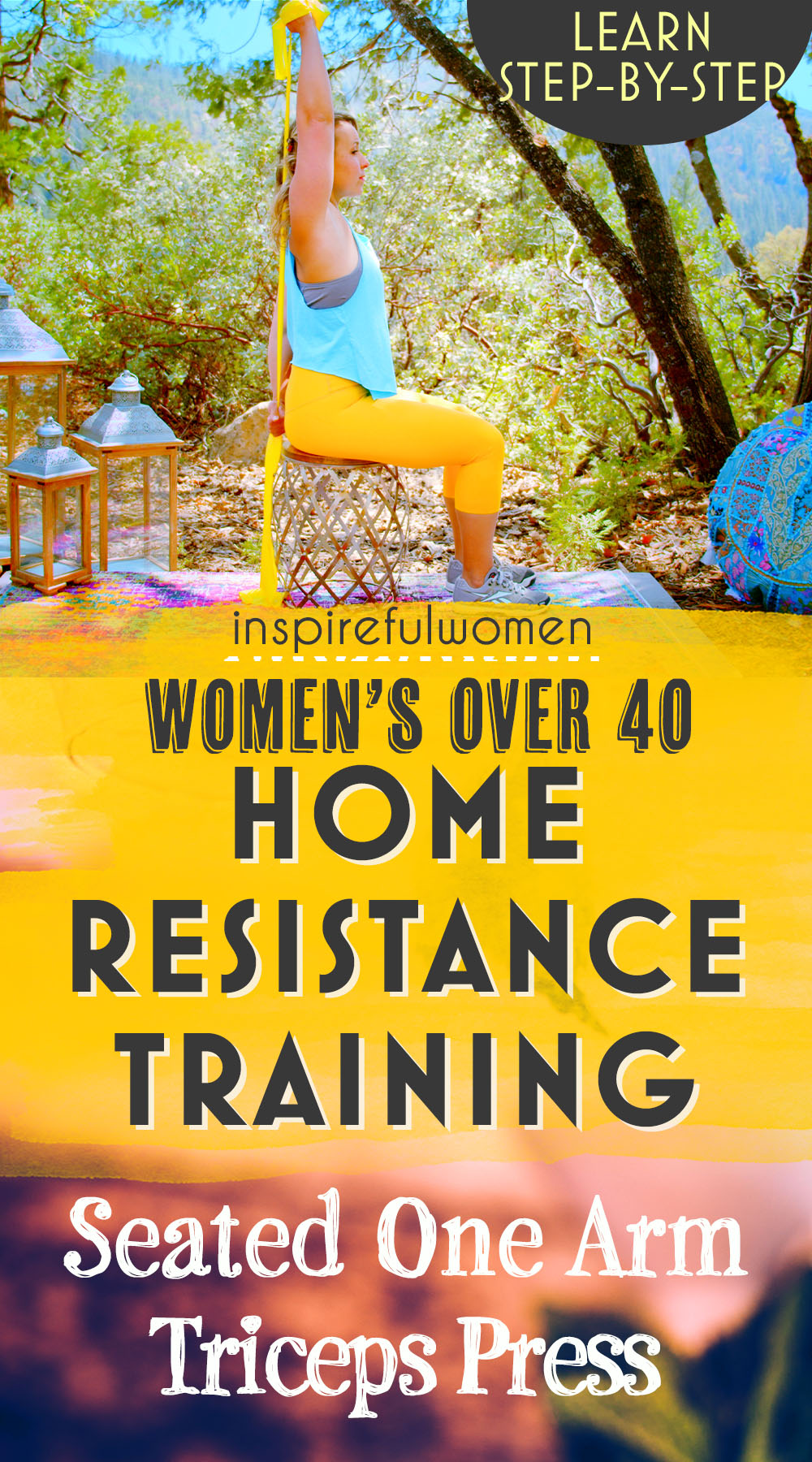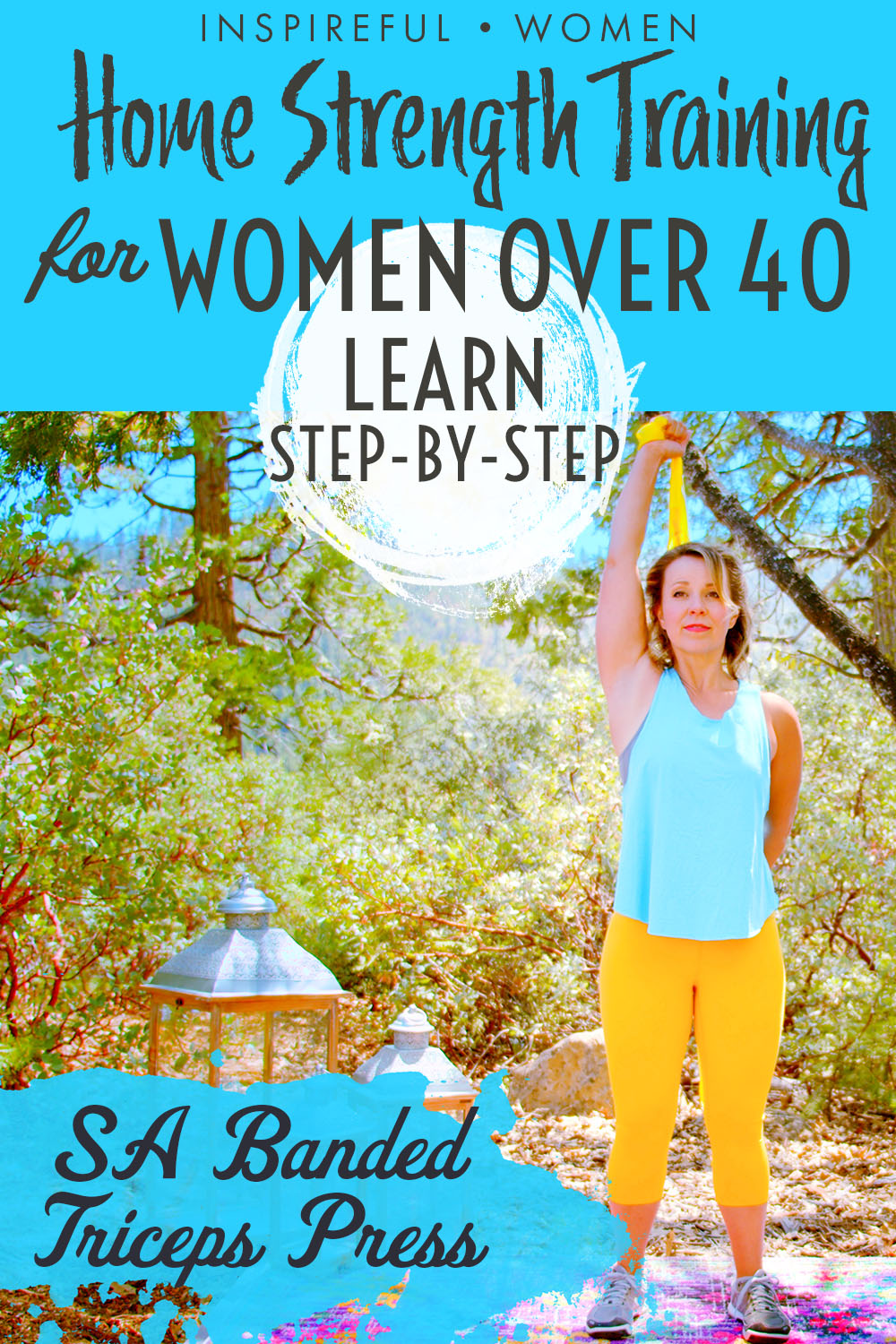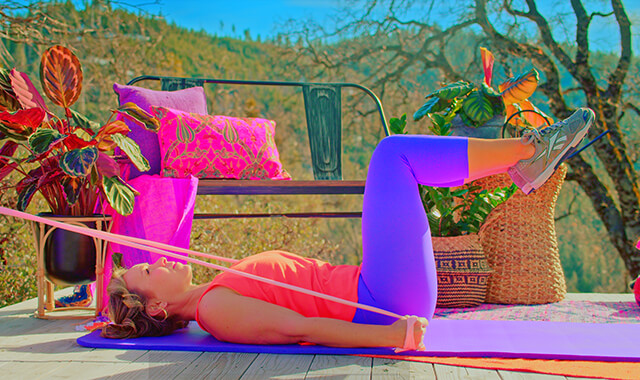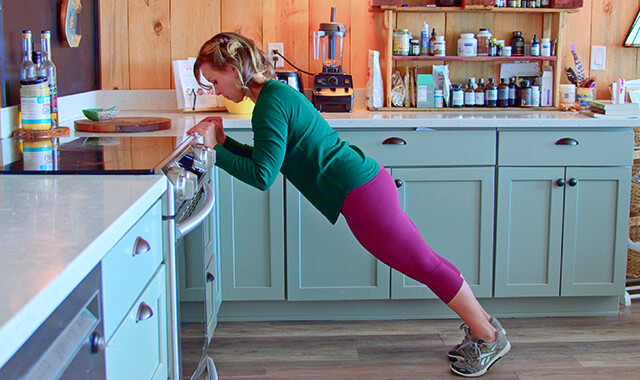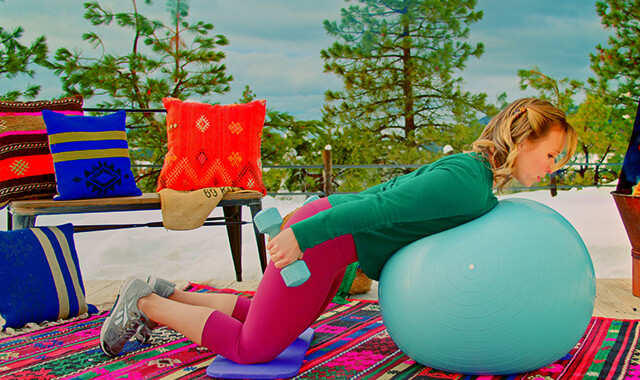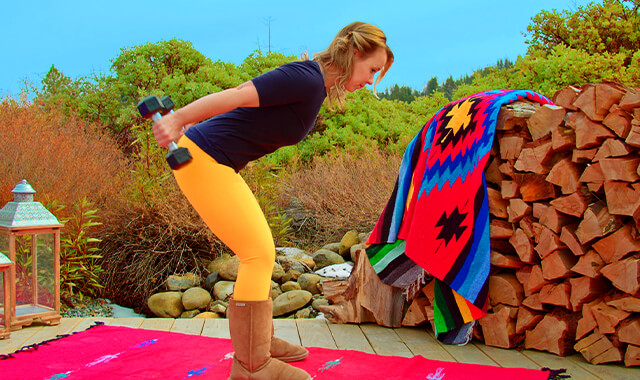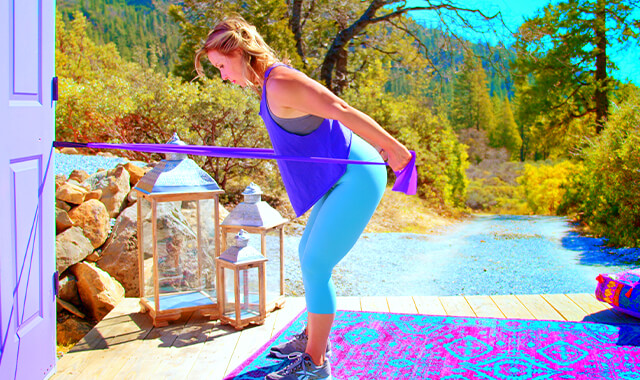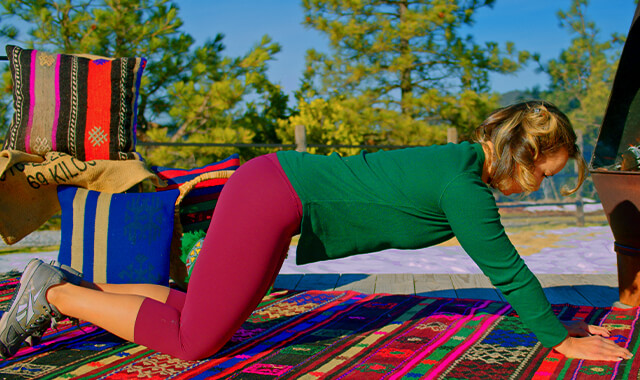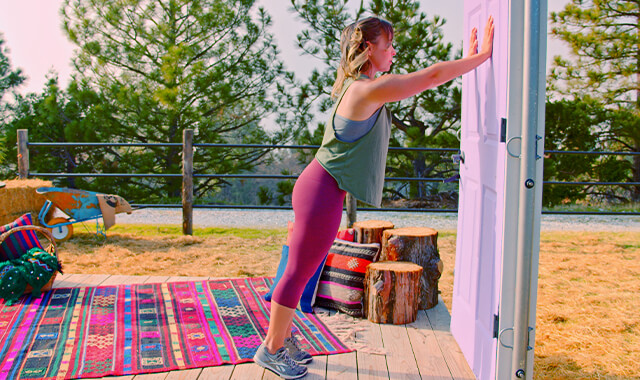Band Single Arm Overhead Triceps Extension
How to Do the Band One Arm Overhead Triceps Extension | In-Depth Guide [VISUAL LEARNERS] Advanced
Proper Form, Common Mistakes, & Variations | Home Resistance Training
WHAT DO YOU WANT TO SEE?
QUICK DEMO
QUICK DEMO
MUSCLES THIS WORKS
MUSCLES
MAIN MUSCLES WORKED IN the Overhead Triceps Extension
Triceps
STARTING POINTERS
Starting Pointers
WHAT WE'RE DOING TODAY
Other names for this exercise: Overhead Triceps Press, French Press
ALL WE'RE DOING:
This one is a bit awkward, not gonna lie. Not difficult so much as awkward. Read on.
This one doesn’t pull on/hurt my elbow like the dumbbell version has at time. It is great for your posture, it pulls the shoulder of the holding arm is back - so a nice stretch for the pec minor and probably the pec major.
This version of the overhead press uses a resistance band and one arm to anchor the band. This is a good option when your band is very short or you don’t have a good way to anchor the band. This position has an added bonus of stretching the muscles on the front of the chest. Using an elastic band provides the option of increasing the resistance as the elbow straightens. This is different from using dumbbells. When you use a dumbbell the work that the triceps has to do to straighten the elbow decreases as the elbows straighten, when you use a band the triceps will have to work harder as the elbow straightens.
If you struggle to have your upper arms directly overhead, it’s okay to have the upper arm a bit more forward. The only difference is a little less of a stretch on the long head of the triceps - but much more comfortable and safer for the shoulder joint.
I woul say use I would use lighter resistance and this is not one to be done a lot. Always listen to your body. On a day that you may be stiffer or tighter you may feel it in your shoulder more.
If this positioning is uncomfortable for you- ie you experience pain or tightness, these other triceps exercises will likely be a better choice for you: Skullcrushers, Triceps Kickbacks, Tricep Pushdowns - any triceps move where your upper arm/elbow isn’t being held up in line with your head.
HOW TO DO THE EXERCISE
LOOKS
HOW Overhead Triceps Extensions SHAPE OUR BODY
Balances out the biceps in the upper arm give upper arm horseshoe definition.
PROPER FORM
PROPER FORM: Band Single Arm Overhead Triceps Extensions
EQUIPMENT, SETS & REPS
EQUIPMENT
Main set (3: Light/Med/Heavy)
X-Heavy Band (I recommend getting this too if you plan to use resistance bands frequently).
SUGGESTED STARTING WEIGHT FOR WOMEN:
Light to moderate resistance bands
SETS & REPS:
2 sets of 8 reps - form must be good, no shoulder discomfort.
PACE:
Quick up and slow down.
BODY POSITION
BODY POSITION FOR THE Band Single Arm Overhead Triceps Extension
BAND/HANDS: Let’s get our working arm in position first - holding one end of the band, with the end coming out the top of your pinky side, bring your upper arm in line with your head, elbow pointing forward (this is called full shoulder flexion). Think of pulling your elbow towards your ear. Bend your elbow so that your forearm is either parallel with the ground, or even more bent than that if it’s comfortable.
The band will be dangling down your back at this point.
With your other hand hanging down at your side, you will then reach behind your body & up, bending your arm, to grab the band, trying to secure your hand to a place that will give you some starting tension on the band. This can easily be adjusted during the movement as you find what tension feels challenging enough. In this starting position pull your shoulder & shoulder blade back.
GRIP: Whatever is most comfortable and allows you to keep the elbow pointed forward: neutral, or palm facing up or down.
FEET: Feet hip width apart, toes pointed forward.
BODY STANCE: Knees slightly bent. Neutral spine position, sternum lifted, space between the top of your shoulder and your earlobe.
HEAD/NECK: Check your head position and make sure you are not pressing your head forward to make room for your hand and the band behind you- ear should be in line with your shoulder. Keep your neck muscles relaxed during the movement.
HOW TO DO
HOW TO DO Band Single Arm Overhead Triceps Extensions
CUE: Keep your elbow pointing forwards. Relax to let the band pull your upper arm back and your forearm down at the beginning of each rep.
Straighten your elbow to move your hand up towards the ceiling.
Slowly lower your hand back down, your elbow can bend a bit further to increase the range of motion your triceps are working through.
Repeat until fatigue or the desired # or reps are completed.
HOW TO SAFELY GET OUT OF THE EXERCISE
In the starting position - arm up and elbows bent, release the band.
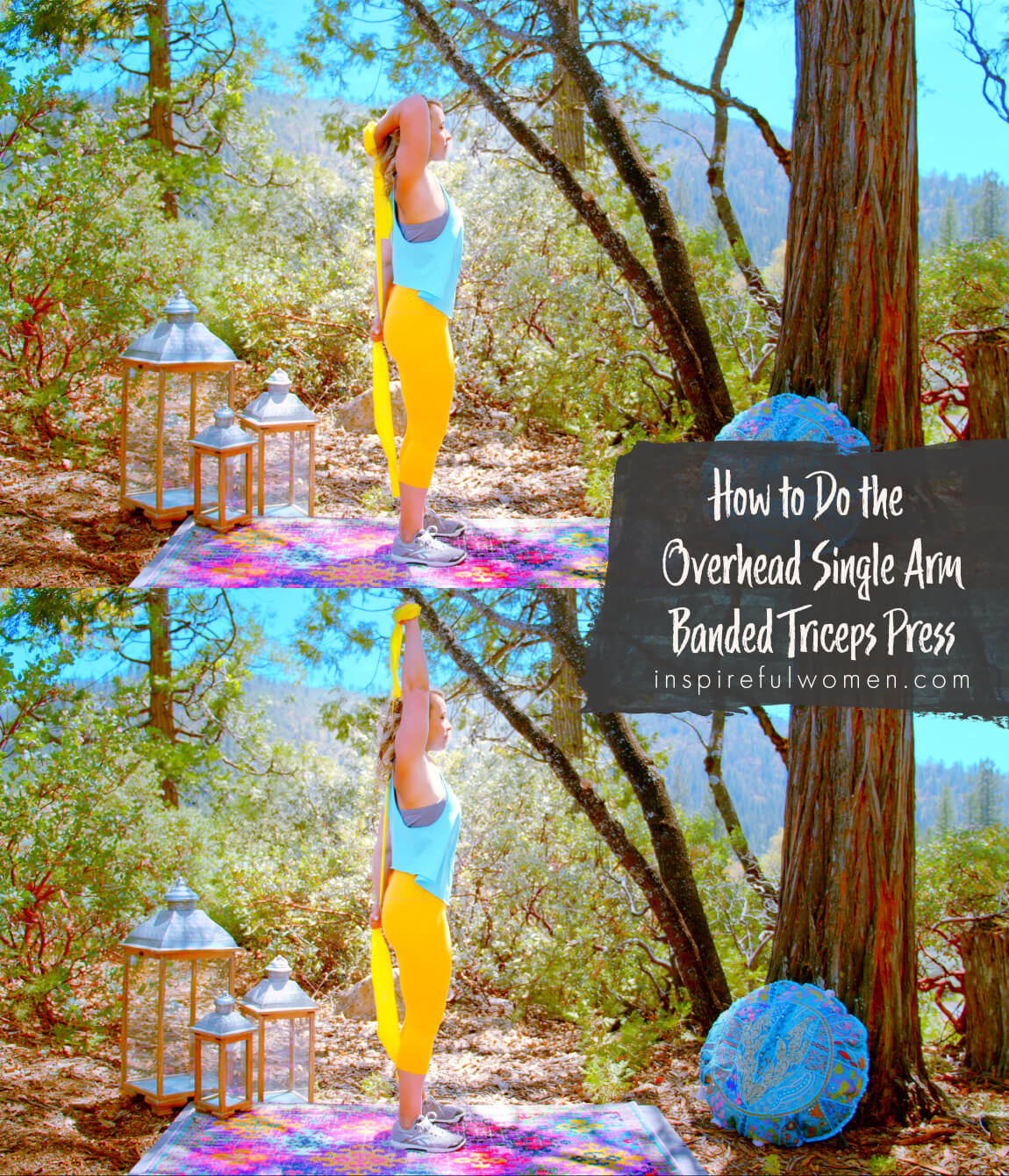

COMMON MISTAKES
COMMON MISTAKES
WHAT TO AVOID WITH THE Band Overhead Triceps Extension
KEY TIP:
Guess what? Good news! Many avoids are the same for most movements. Once you learn the basics, there's really only a few extra avoids for each individual movement.
1. Avoid flaring elbows
AVOID: Letting the elbows flare out.
WHY NOT?
- This will put the shoulder joint moves into internal rotation, decreasing the space between the top of the shoulder blade (the acromion process of the scapula) and the upper arm bone (humerus)
- Reduces the effectiveness of the exercise - it is more difficult to get full elbow extension at the top of the movement.
WHAT TO DO:
- Keep the elbows pointing straight forward.
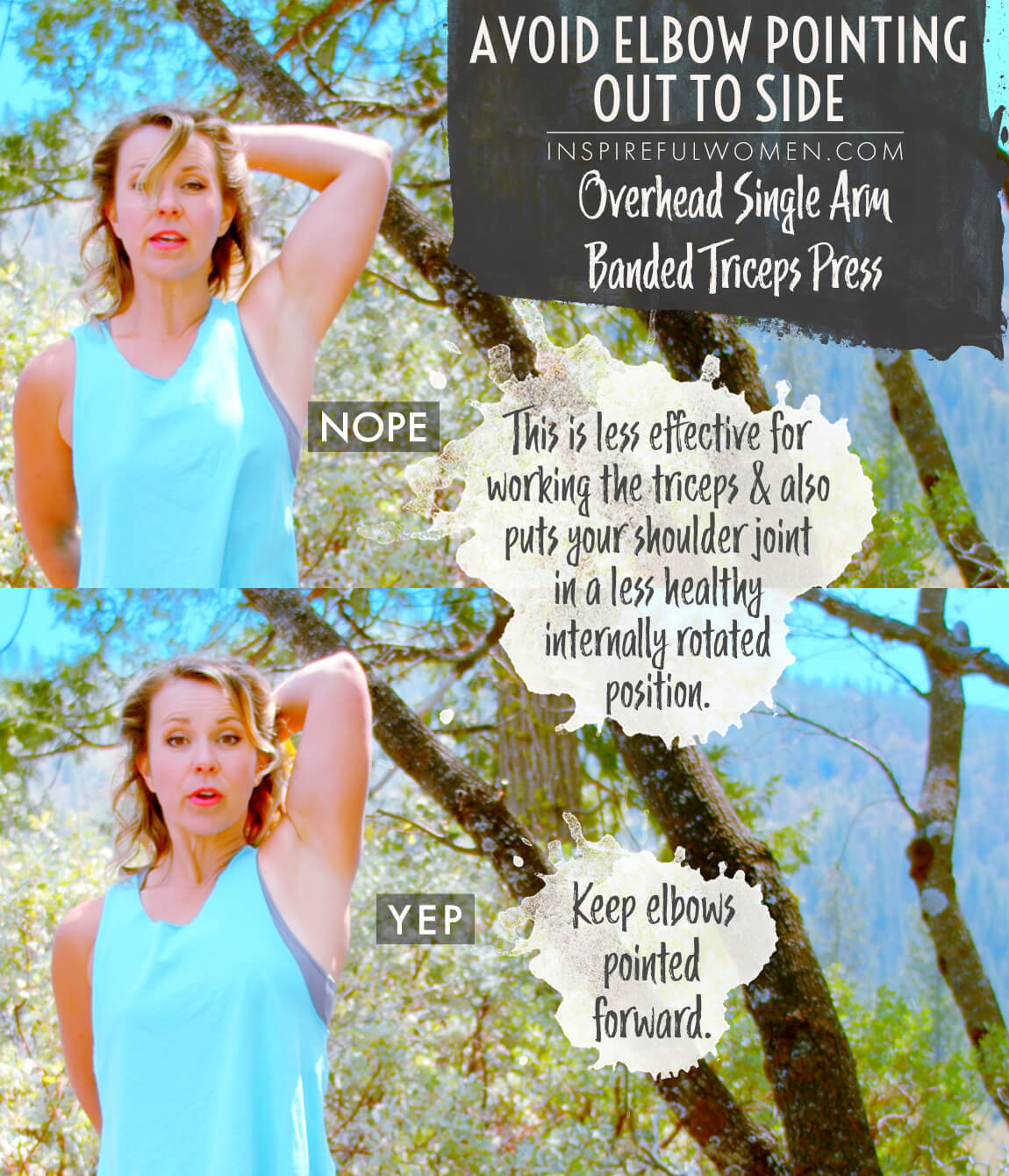
2. Avoid forward head
AVOID: Pulling the head forward.
WHY NOT?
- This can happen when the upper back or shoulders are stiff - the hands cannot get far enough back to avoid hitting the head, so the head is jutted forward.
- This can strain the neck muscles and encourage forward head posture.
WHAT TO DO:
- Try performing the exercise without resistance and looking in a mirror (to the side).
- If you are too restricted in your upper back and/or shoulders, this may not be a good exercise for you - may cause irritation to the shoulder or neck.
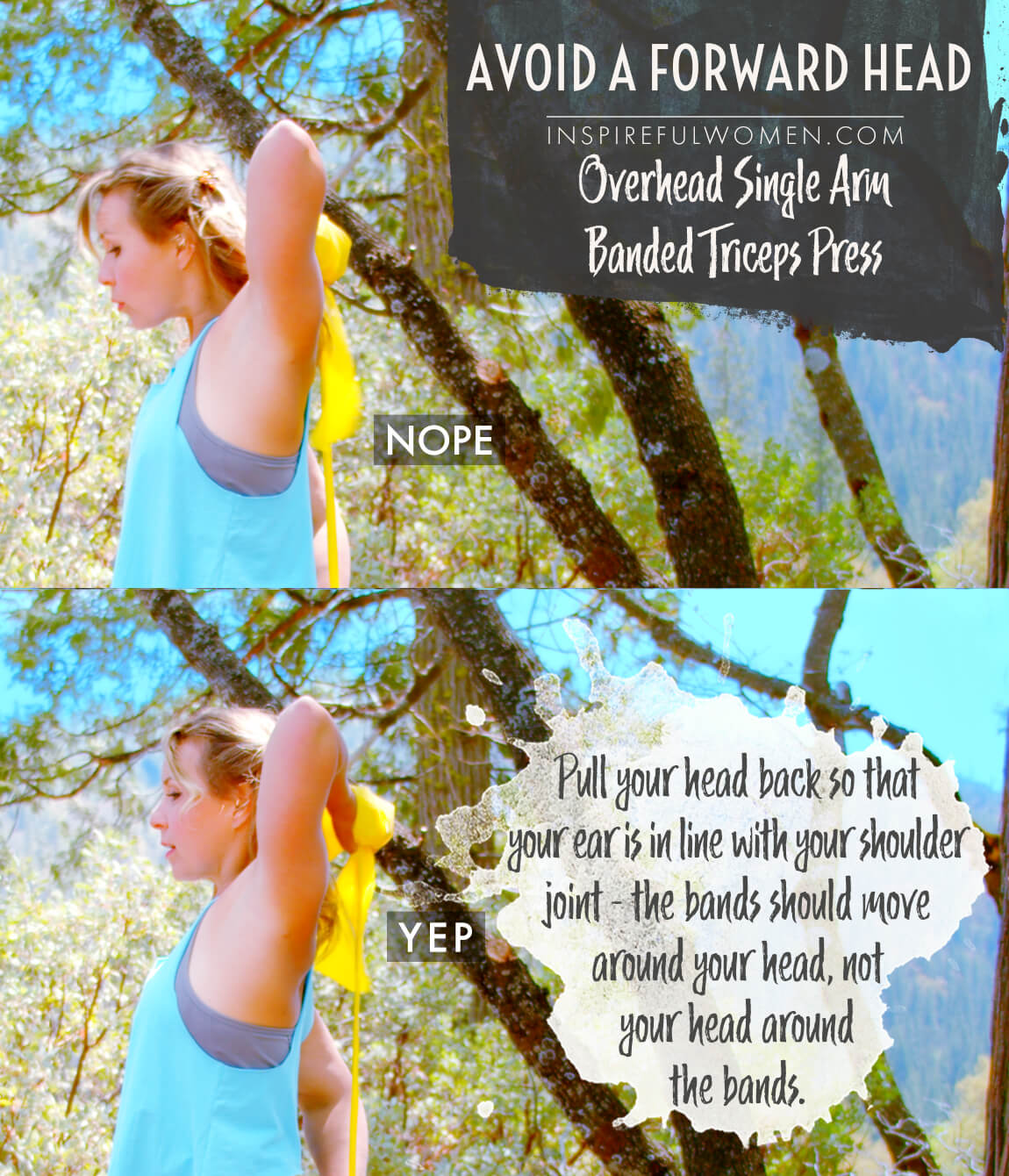
3. Avoid arching low back
AVOID: Arching your low back.
WHY NOT?
- Holding the weight behind the head can result in leaning backward and arching the low back, this may lead to injury to the low back.
WHAT TO DO:
- If your ribs lower ribs flare upwards or your belly is lifted up - this indicates you are arching your low back.
- To prevent arching - try using less weight/resistance
- Maintain a neutral spine position to prevent low back joint injury, muscle strain, or damage over time.
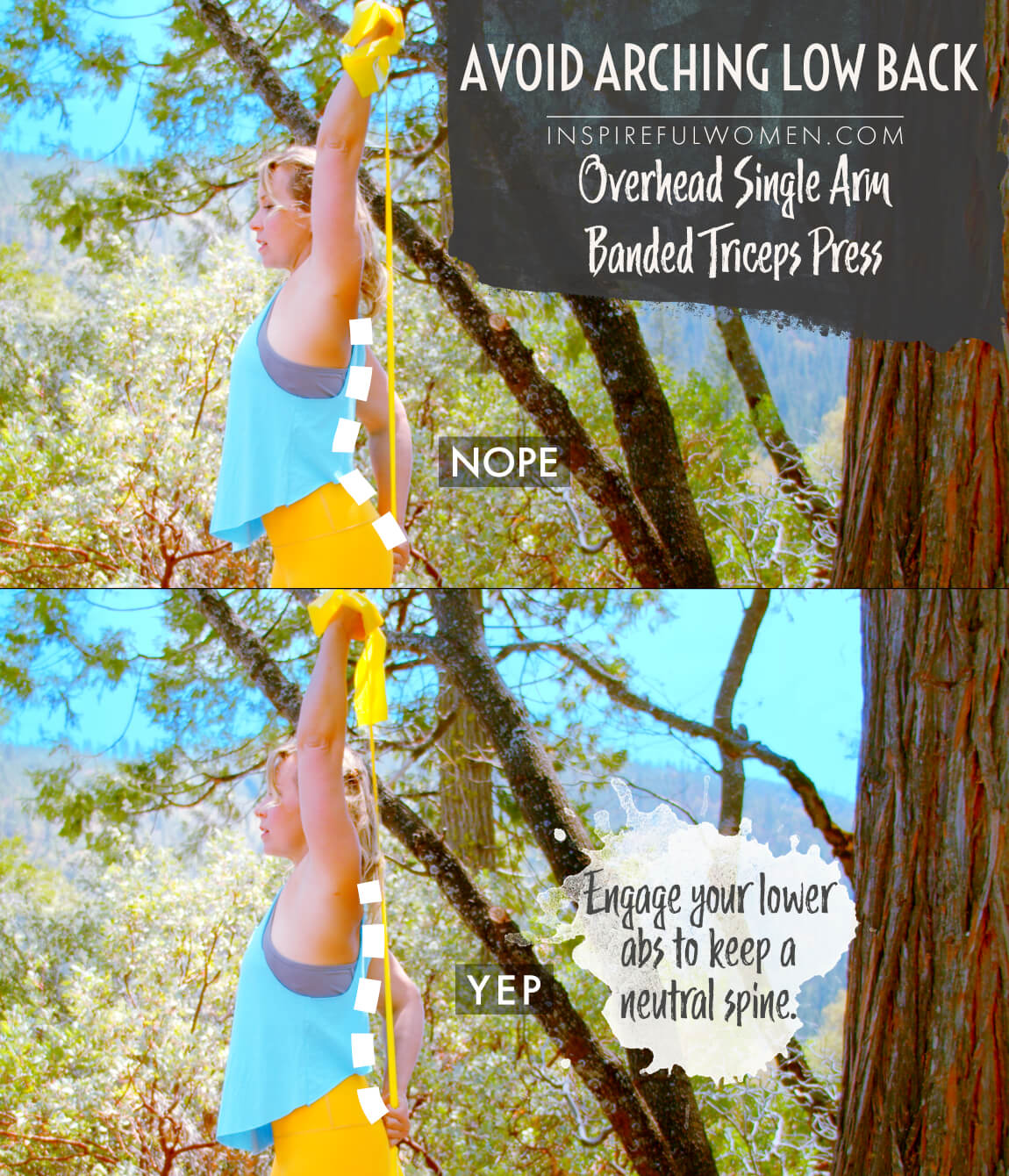
4. Avoid locking knees
AVOID: Straightening or locking the knees.
WHY NOT:
- If your knees are locked you may feel pressure or discomfort in the low back or knees.
- Locking the knees puts stress on the knee joint and can make it more difficult to maintain a neutral spine.
- Will decrease the muscle activity of the legs.
WHAT TO DO:
- The knees should be slightly bent.

5. Avoid hyperextending elbows
AVOID: Hyperextending or locking the elbows when the arms are out straight - at the end of the movement.
WHY NOT?
- This puts too much force through the joint and may result in long-term damage over time.
- Can stretch the ligaments and tendons that support the joint.
WHAT TO DO:
- Keep the elbows slightly bent, even at the end of the movement.
VARIATIONS
VARIATIONS
VARIATIONS OF Band Single Arm Overhead Triceps Extensions
seated
Seated
This exercise can be done in a seated position which makes it easy to isolate the focus and movement to the elbow joint. There is less attention and energy needed to stabilize the torso.
Sit up tall, neutral spine, equal weight bearing on sitz bones (ischial tuberosities or sitting bones, part of the pelvis where the hamstrings attach). Feet flat on the floor, hip-width apart, toes pointed forward.
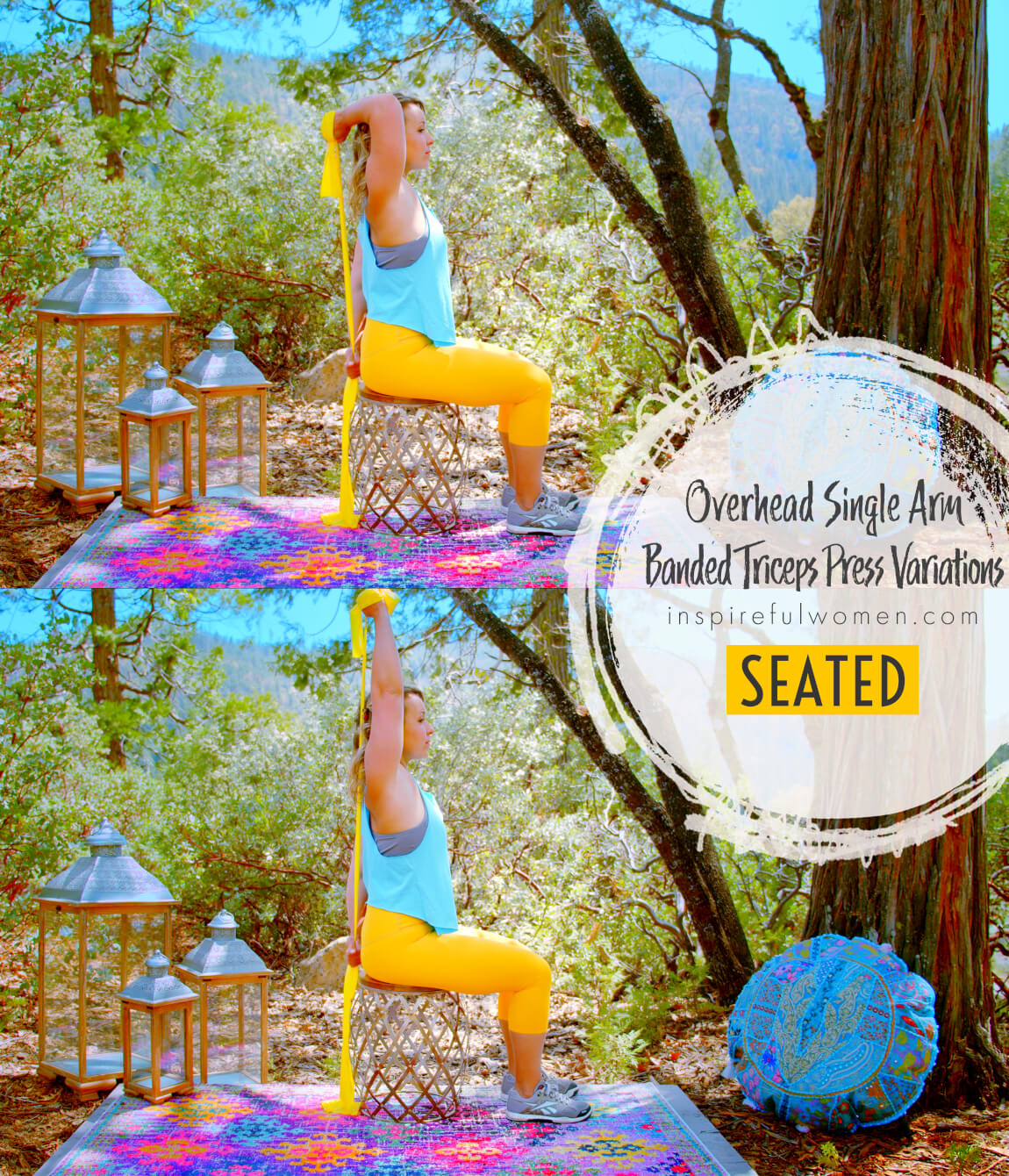
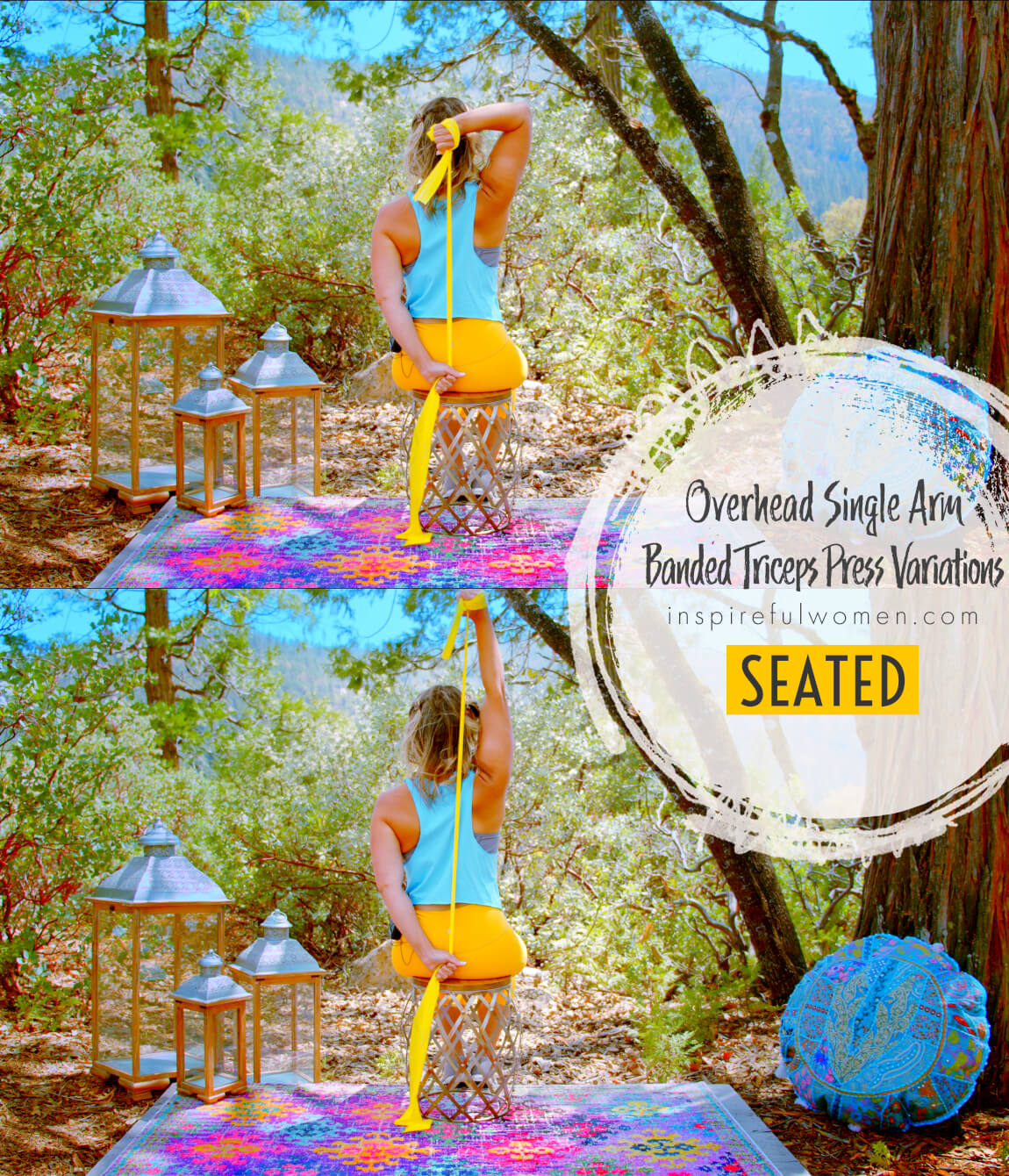
Stability ball
Seated on Ball
This decreases stability - you can imagine why! The "cush" of the pad will make your foot, leg muscles, and core, work harder to keep your balance.
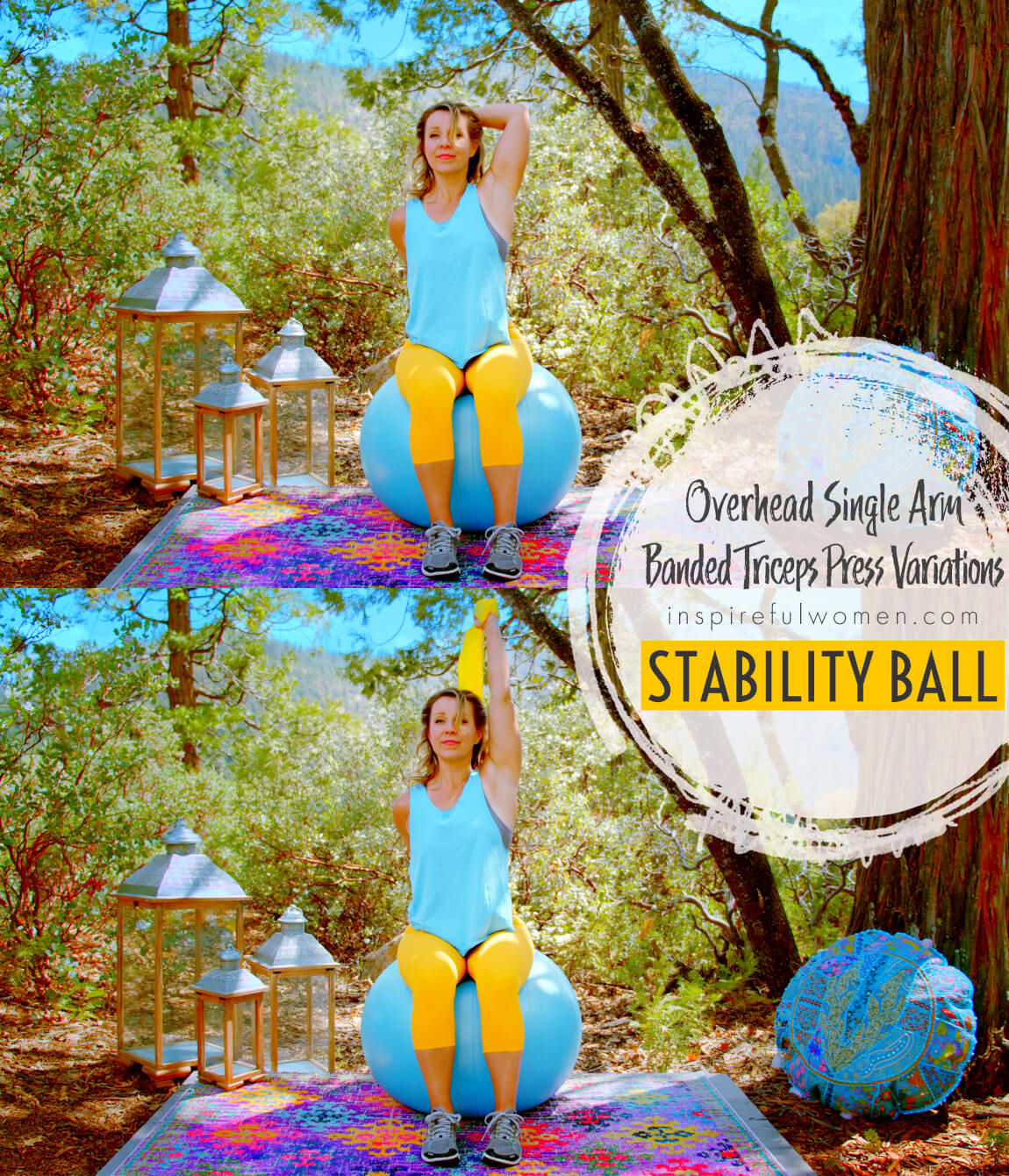
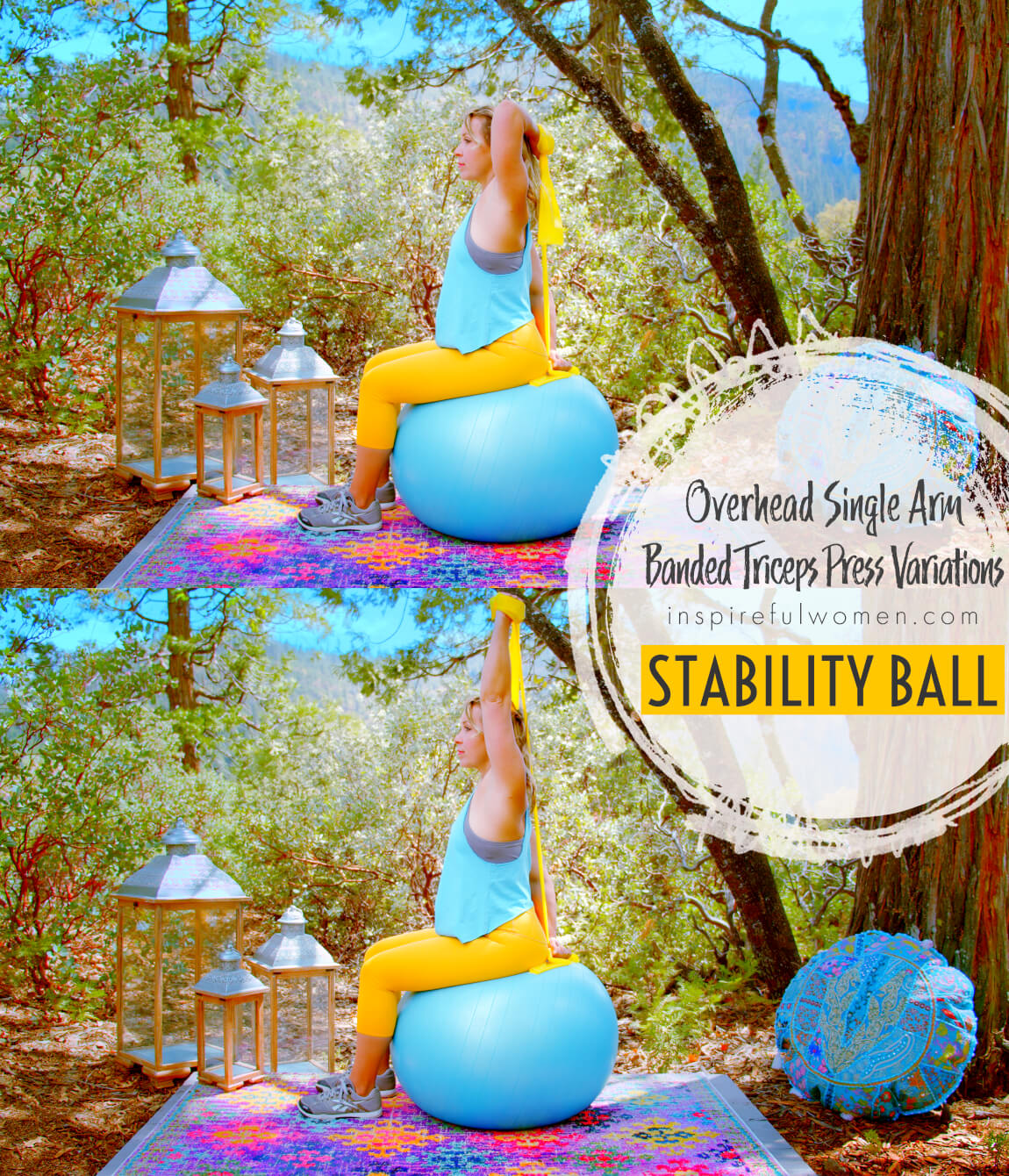
WHAT WE'RE DOING TODAY
WHAT & WHY
BENEFITS OF TRAINING THE Triceps
WHAT
The Overhead Tricep Extension also known as the french press when done seated, works the muscles that are on the backside of the upper arm- the triceps. It's done by holding the arms up overhead and then bending and straightening the elbows. It sounds simple enough but holding the arms up overhead works the muscles of the torso and the shoulders. This position also puts a nice bonus stretch on the upper back, triceps, and lats.
This movement feels good and works the muscles but it can be hard to get the form right. Doing the exercise first without any weights will help to make sure that you can get in the right position and complete the movement without arching the back or moving the head forward. You can check your range of motion by checking your position in a mirror. If you have stiffness in your shoulders or upper back this exercise can be irritating to the shoulder joint. This can also happen if you try to lift too much weight, the shoulders are hunched up towards the ears, or if the elbows flare out to the sides.
WHY BOTHER DOING IT?
WHY
WHY DO WE EVEN CARE?
BALANCE OUT THE BICEPS. IMPROVE YOUR STRENGTH TO PUSH STUFF.
Working the triceps is important to balance the frequently overtrained/overused biceps muscle. The triceps is the largest muscle of the upper arm, it accounts for about ⅔ or the muscle bulk of the upper arm.
The biceps and triceps muscles do opposing actions - the biceps bend the elbow and the triceps straighten the elbow. Muscles that do opposite actions need to work together in order to be able to control movement and to stabilize the joints - in this case, the elbow and shoulder. When one of the two muscles is proportionately stronger than the other - it puts the weaker muscle and the joints at a higher risk for injury.
EVERYDAY LIFE
EVERYDAY LIFE &
MUSCLE FUNCTION
HOW WE USE OUR Triceps MUSCLES IN EVERYDAY LIFE
1. STRAIGHTENS (EXTENDS) THE ELBOW (ALL THREE HEADS)
- Pushing an object overhead
- Pushing a door open or shut
- Chopping - swinging down
- Hammering - swinging down
- Sawing - pushing out
- Throwing a ball overhand
- Swatting a fly
2. THE LONG HEAD PULLS THE ARM DOWN WHEN IT IS OVERHEAD (SHOULDER EXTENSION)
- Pulling a cord to open a curtain
- Pulling a window down to shut it
3. ALL THREE HEADS HELP TO HOLD THE ELBOW JOINT STILL (JOINT STABILIZATION), THE LONG HEAD HELPS TO HOLD THE SHOULDER JOINT STILL
- Writing
- Pushing a stroller or grocery cart
- Using a screwdriver or knife
- Knitting
- Replacing a ceiling lightbulb
HOW TO FEEL WHAT MUSCLE IS WORKING
How to Feel What Muscle is Working
To feel your triceps activated: lift your arm in front of you and set the hand and forearm on a table or counter.
Put your other hand on the back of your upper arm. Press down with the hand resting on the surface.
1) press down as if you were trying to straighten just your elbow; 2) press down as if you were trying to pull your upper arm down to your side. In both cases, you should feel your triceps working.
SCIENCY STUFF
SCIENCY STUFF
SPIFFILICIOUS FACTS ABOUT MUSCLES & MOVES
This movement works all three heads of the triceps in a position that facilitates muscle growth through a large range of elbow movements. The long head of the triceps is lengthened over both the shoulder joint and the elbow joint in the starting position. Exercising the muscle in a lengthened position is thought to facilitate muscle growth. Additionally, the position of this exercise allows lifting the weight as the elbow moves through a large range of motion - from flexed to fully extended. The triceps muscle is strongest when the elbow is bent 90 degrees, in this exercise that is also the position where the torque on the elbow joint is the greatest (longest lever arm - the downward force of gravity on the weight is greatest).
When the shoulder is flexed up over 90 degrees the medial and lateral heads of the triceps are more active than the long head of the triceps. There is a trade-off with the overhead triceps extension. Some research supports putting the muscle on the stretch before activating it to build the muscle - this exercise puts the long head of the triceps on stretch at the end of the movement. But the shoulder flexion is greater than 90 degrees which is a position where the medial and lateral heads are more active.
For exercises that involve fully straightening the elbow under a load - holding a dumbbell overhead like this exercise, or weight-bearing on the arm, it is important to know if you are a person that hyperextends their elbows. Hyperextension occurs when the ligaments that are stabilizing the joints are too loose. Too much movement in the joints can accelerate degenerative changes to the cartilage over time. Checking your movement in the mirror when you fully straighten your elbows - they should not bow back - the upper arm and the forearm should be in line. Your hand should not be behind your elbow joint. Strength training into a hyperextended position, especially under load (heavier resistance) can cause damage to the joints.
ALLLL MUSCLES & WHEN
ALL MUSCLES WORKING & WHEN DURING THE Band Single Arm Overhead Triceps Extension
The core muscles are active to hold the spine in a neutral position throughout the exercise.
In the beginning position, the scapular stabilizers are working isometrically to hold the shoulder blades in place to stabilize the upper arm.
In the beginning position, the long head of the triceps will be lengthened across both the shoulder joint and the elbow joint - this puts this head of the triceps at a mechanical disadvantage; so the medial and the lateral heads will do more of the work as they contract concentrically to extend the elbow joint. The anconeus muscle will also help (although it is a relatively small contribution). As the elbow straightens the long head of the triceps will be able to contribute more.
The forearm and the upper arm muscles will work together to stabilize the elbow joint as it extends.
As the hand is lowered to the starting position the triceps and anconeus work eccentrically to control the load.
PIN IT FOR LATER!
